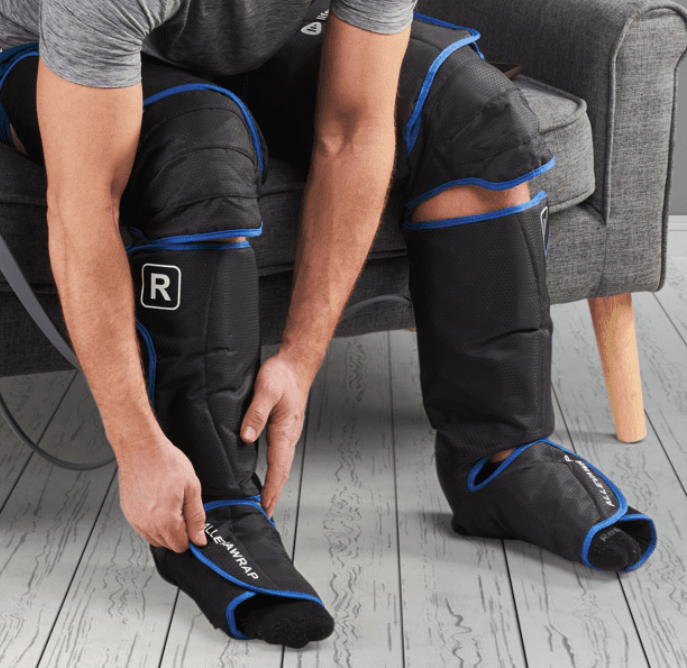
Compression Machines Aren’t Just Tools—They’re Interfaces for Circulatory Intelligence
A Dopaminergic Guide to Next-Level Leg Recovery
Why Asking “How Often Should I Use It?” Is the Wrong Question
The common question—“How often should I use a leg compression machine?”—isn’t wrong. But it’s narrow.
It’s like asking:
“How often should I open my laptop?”
Or: “How many times should I breathe deeply per day?”
These aren’t just frequency questions.
They’re interface design problems.
Because a compression machine is not merely a device—it’s a physical interface between your body’s vascular intelligence and your behavioral design system.
And once you view it through this lens, everything changes.
Compression Therapy as a Modular Intelligence Layer
Let’s reframe IPC (Intermittent Pneumatic Compression) not as a static recovery device, but as a biological co-processor—something that:
- Renders real-time recovery feedback through sensation
- Interfaces with your circulatory and lymphatic logic
- Prompts behavior adaptation (hydration, movement, rest cycles)
- Integrates with predictive input loops like stress, climate, travel, and hormonal rhythms
In other words: compression isn’t just therapy.
It’s biofeedback architecture.
Rewiring Your Use Case: 5 Emerging User Archetypes
Let’s explore five future-forward usage personas, beyond “athlete” or “post-surgical patient”:
1. The Neuroadaptive Performer
Uses compression to shift between sympathetic and parasympathetic states pre/post speaking engagements, deadlines, or cognitive sprints.
Insight: Pairing 10-minute compression with guided breathwork may enhance vagal tone, promoting neural recovery—not just muscular.
2. The Data-Driven Remote Worker
Stacks compression sessions with Pomodoro work blocks.
When sedentary time exceeds 90 minutes, smart compression sleeves activate autonomously.
Insight: Combine with wearable HRV data to close the “circulation loop” triggered by inactivity spikes.
3. The Hormonal Rhythm Syncer
Adjusts session frequency and pressure based on cycle phase (e.g., luteal water retention), cortisol spikes, or post-menopausal temperature changes.
Insight: Compression could become phase-aware, adjusting to estrogenic and adrenal flux in real-time.
4. The Geo-Responsive Traveler
Uses compression with climate intelligence: more sessions in humid, high-sodium, high-altitude, or immobility-intensive zones (flights, buses, remote tours).
Insight: A geo-tagged compression protocol might auto-adjust based on altitude, local humidity, and weather data.
5. The Circadian Harmonizer
Schedules compression in sync with cortisol and melatonin curves—shifting usage away from intensity-based routines and toward chrono-biological alignment.
Insight: Pre-sleep compression may downregulate cortisol and support melatonin pathways in high-stress or jet-lag conditions.
The Evolving Role of the Compression Machine
Compression devices are evolving into smart-coach biointerfaces.
Picture this:
- Devices linked to your Apple Health or WHOOP band
- AI algorithms that suggest usage times based on sleep debt + swelling markers
- Sleep-mode compression, activated only in deep NREM cycles
- Real-time zone customization based on EMG or strain data
- Blockchain-backed anonymized data for circulation research across demographic profiles
This isn’t science fiction—it’s compression therapy 3.0.
From Routine to Ritual: Compression as Micro-Agency
Using compression isn’t just physical.
It becomes a ritual of sovereignty over your state:
- In the morning: to ground yourself before a digital day
- After travel: to reintegrate your body into time and place
- Before sleep: to shift from mind back to soma
- During stress: to signal safety and presence back into the nervous system
This transforms the act from recovery to neurological authorship.
Compression Stack: Building an Intelligent Recovery Protocol
To shift from usage to system design, create a multi-layered stack:
| Layer | Description |
|---|---|
| Movement Layer | Short walks, ankle pumps, or light yoga flow |
| Hydration Layer | Electrolytes pre- and post-compression to improve lymphatic return |
| Neurological Layer | Breath pacing or vagal stimulation during sessions |
| Sleep Prep Layer | Cool room + low-pressure compression + binaural beats |
| Data Feedback Layer | Use wearables or journaling to refine intensity and timing |
Compression, in this context, is no longer an action—it’s a trigger node in a complex system.
Future Questions We Should Be Asking
To truly step into extrapolated recovery intelligence, we must go beyond “how often?” and start asking:
- How might compression act as a diagnostic tool for early cardiovascular inefficiency?
- Can AI predict when we’ll need recovery before we feel it?
- Will compression become part of workplace ergonomic standards?
- Can compression-induced circulation surges enhance creative cognition or memory formation?
These are no longer distant speculations.
The intersection of biosensors, AI, and nervous system mapping makes them actionable blueprints.
Final Takeaway
Stop thinking of compression machines as tools you “use X times per day.”
Start seeing them as:
- Interfaces for circulatory cognition
- Recovery beacons in your behavioral architecture
- Gateways to adaptive intelligence
Because in the coming wave of personalized health tech, the most powerful question won’t be how often should I compress?
It’ll be:
What state am I optimizing for right now—and how can compression help me get there?